Thermodynamics and Fluid Mechanics (AE-280) Final
1/87
Earn XP
Description and Tags
When I catch you...
Name | Mastery | Learn | Test | Matching | Spaced |
|---|
No study sessions yet.
88 Terms
What is buoyancy force?
The net upward vertical pressure force.
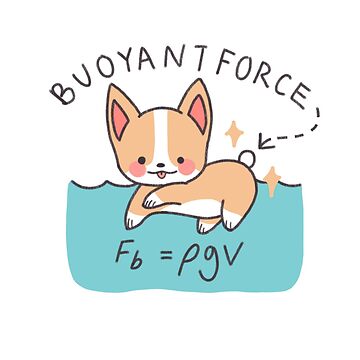
What is the magnitude of the buoyancy force equal to?
The weight of the liquid displaced by the body.
For buoyancy, where does the force act in relation to the displaced fluid AND the object?
Acts through center of gravity (CG) of displaced fluid
Act through center of buoyancy (CB) of object
True or false.
CB and CG are both fixed on an object when it is submerged.
True.
If an object is disturbed/rolls slightly, what happens to CB and CG?
CB and CG are not vertically aligned and the buoyancy forces and weight acting at those points produce a moment.
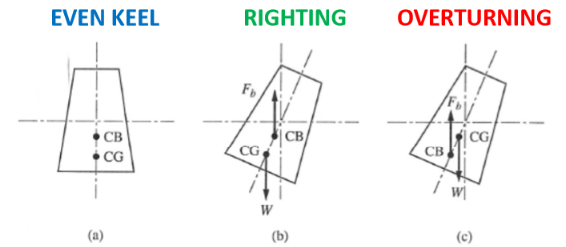
What indicates that an object is stable after overturning?
A restoring/righting moment.
What does an overturning moment indicate?
Unstable object.
What is Newton’s second law?
Describes the affect of net force and mass upon the acceleration of an object
F = ma
What is a streamline?
A line that is tangential to a fluid particle’s velocity vector. The magnitude of velocity can change along streamline.
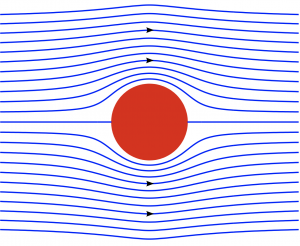
For streamline, what is the direction of travel given by?
Given by the streamline path.
For streamline, what is the speed of travel given by? Does it change along the streamline.
V = ds/dt
Yes, can change.
What two ways can inviscid fluid particles experience acceleration?
Streamwise acceleration due to changing velocity along the streamline.
Centrifugal acceleration normal to the steamline.
What does inviscid mean?
Not viscid (duh).
“Inviscid” refers to a theoretical fluid with zero viscosity, meaning it has no internal friction or resistance to flow.
When can we use the Bernoulli equation?
Along the streamline.
How do you get total head?
velocity head + pressure head + elevation head = total head.
What three forms is the Bernoulli equation expressed in?
Head form→ velocity head + pressure head + elevation head = total head
Pressure form→ dynamic pressure + static pressure + hydrostatic pressure = total pressure
Energy per unit mass form→ kinetic energy + pressure energy + potential energy = energy per unit mass
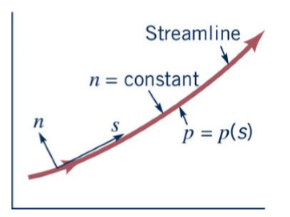
What assumptions NEED to be made in order to use Bernoulli’s equation?
Incompressible fluid
Inviscid fluid
Steady state
Along streamline
To use across streamline equations instead of those of Bernoulli, what must be the case?
Choose streamlines that are parallel and have little to no curvature.
When does uniform flow occur?
When the velocity is constant (magnitude and direction) across the cross section of interest.
Are streamlines parallel in uniform flow?
True.
If v is the average velocity, what distribution does uniform, laminar and turbulent flow follow?
Uniform follows parallel distribution.
Laminar follows parabolic distribution.
Turbulent follows logarithmic distribution.
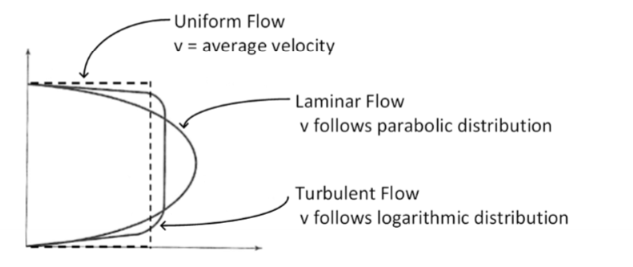
Describe an ideal fluid and its properties.
Frictionless (zero viscosity or inviscid)
Incompressible
Uniform flow
If the system is in steady state, what must be true for the mass flowing into the volume of the pipe and the mass flowing out of the volume of the pipe?
They must be equal.
mass flow rate in = mass flow rate out.
What is the mass flow rate related to?
Volumetric flow rate
Fluid density
Area of each cross section
Average velocity flowing through each cross section
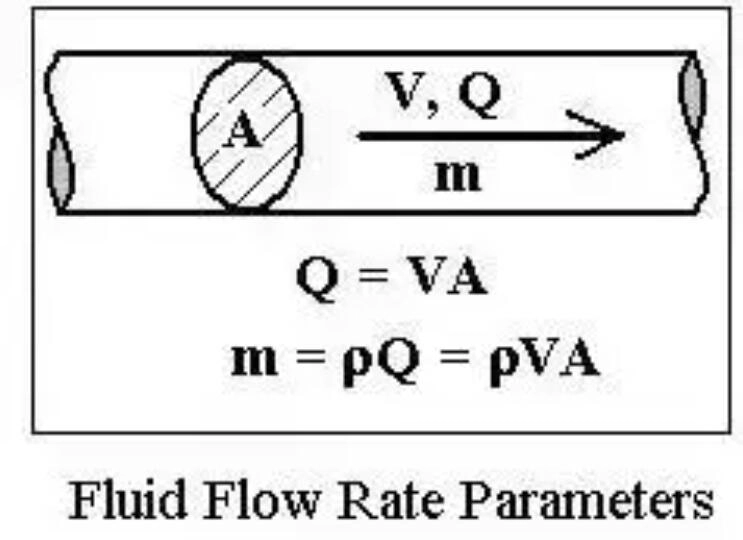
What is a free jet exiting a reservoir or pipe?
Describe a flow of fluid coming from an opening or a nozzle into a space where there are no solid boundaries to influence the flow.
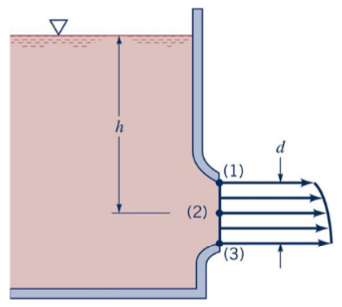
What is vena contracta and when does it occur?
When the fluid passes through the orifice, a jet is formed. The point of jet where area is minimum, pressure energy is minimum and velocity is maximum is called a vena contracta.
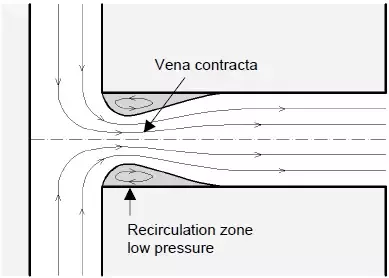
What happens when you ignore vena contracta?
Will overestimate flow rate through an orifice.
What happens to the velocity and pressure with vena contracta?
They both become constant at the jet diameter but not before.

What does the term cavitation mean when referencing fluid mechanics?
Formation of vapour bubbles from flowing liquids (LIQUID BOILS!) in a region where the pressure of the liquid falls below its vapour pressure.
What are the negative side effects of cavitation?
Gas buildup is caused in pumps and siphons which can either reduce flow efficiency or interrupt it altogether.
NOT ONLY THAT, but can cause structural damage if the gas bubble collapse near a surface.
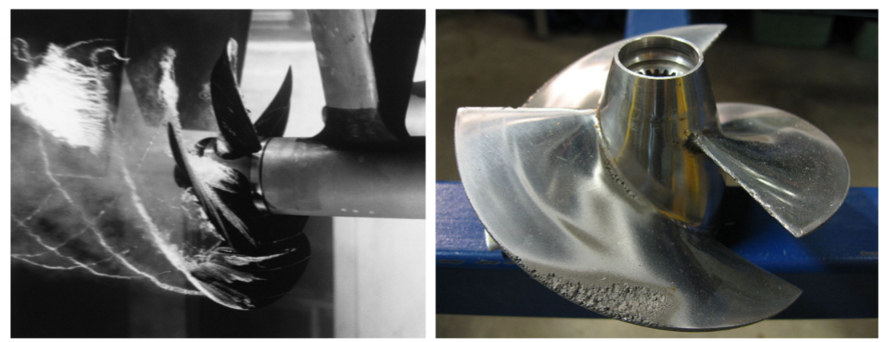
What are grade lines used for?
Visualize fluid energy in units of head (IDEAL flow at this point).
What does each stand for?
EGL, HGL, H,
EGL = energy grade line
HGL = hydraulic grade line or piezometric head
H = total head
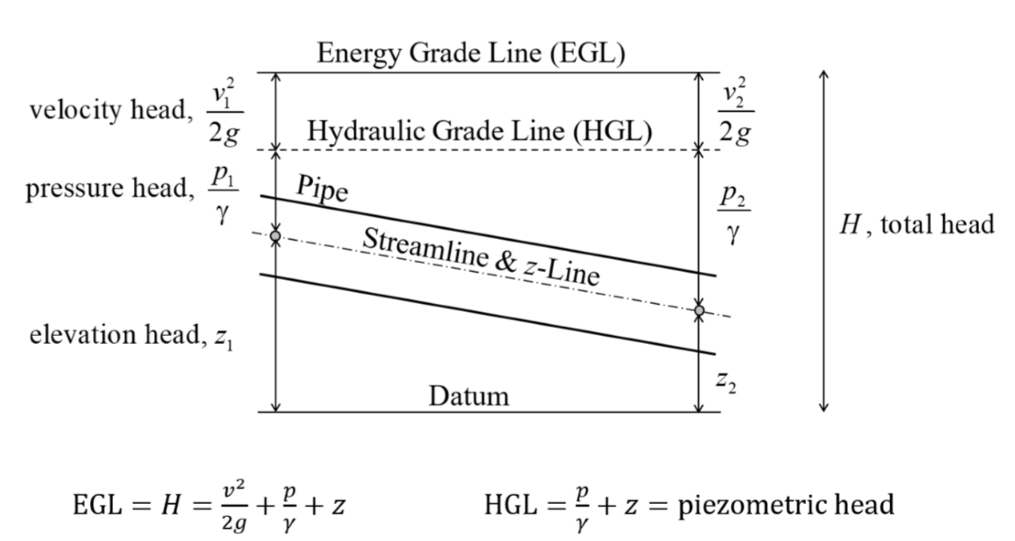
What measures EGL? What measures HGL? What does their difference give?
Piezometers measure the HGL at a point.
Stagnation tubes measure the EGL.
Difference gives velocity head.
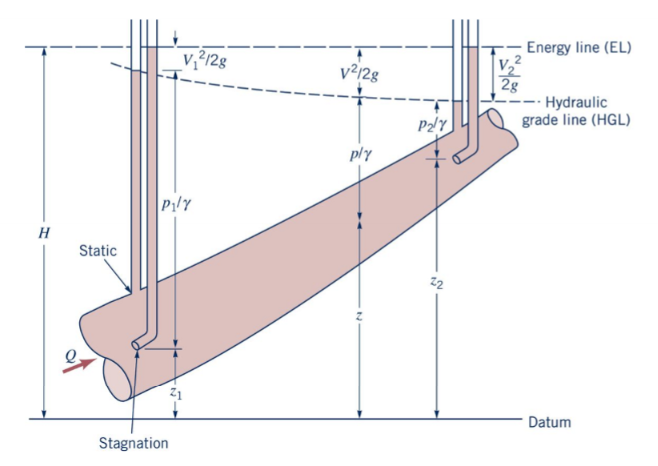
What happens to EGL and HGL when velocity head is zero?
They overlap.
Components of head can have a sign. What are the signs for velocity head, pressure head and elevation head? (as in which are positive, which are negative, which can be either or)
Velocity head is greater than or equal to 0.
Pressure head is greater than or equal to zero or less than or equal to 0.
Elevation head is greater than or equal to zero or less than or equal to 0.
What is a control volume (CV)?
A closed prism used to balance mass, energy and momentum in fluid systems.
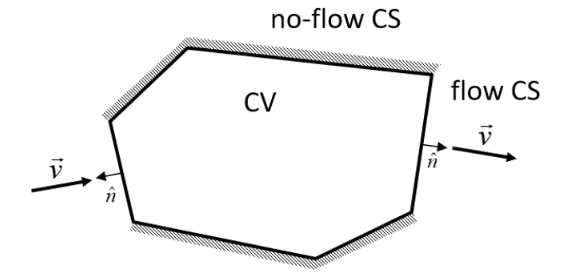
What is a control surface (CS)?
A side of the CV. Has an area and orientation defined by a unit normal vector (USUALLY pointing outside of CV).
A CS can allow fluid flow or be a no-flow boundary.
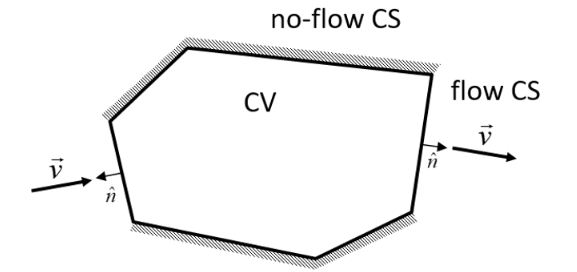
What is the fundamental parameter for fluid flow?
Velocity.
What is a stream tube?
A closed surface formed by a set of streamlines.

True or false.
Fluid flows in one direction in a stream tube.
True.
For mass conservation, are sinks or sources positive?
sources +
sinks -
What is the equation of rate of mass accumulation in CV in word form?
rate of mass accumulation in CV = rate of mass inflow at CS - rate of mass overflow at CS
What is Reynolds number?
The ratio of inertial force to viscous force.
What does a low Re number tell us? What does a high Re number tell us?
Low Re number indicates that the viscous forces acting in the pipe are greater than the inertial forces. High Re number indicates that the inertial forces acting in the pipe are greater than the viscous forces.
Fill in the blank.
Viscous forces lead to _____ and ______ flow patterns whereas inertial forces can lead to _____ and ______ flow patterns.
smooth and orderly
abrupt and chaotic
What is the critical zone?
The transition from laminar to turbulent flow for a system as fluid flow rate increases
Is flow considered turbulent before or after the critical zone?
After.
When talking about energy balance on a pipe flow with losses, what is the ratio for hydraulic radius (R_h)
wetted area/wetted perimeter

For mass, momentum and heat transfer between layers, is it low or high for turbulent flow? What about for laminar?
Laminar→ low
Turbulent→ high
What does a turbulent velocity distribution look like? Does it have a thin laminar sublayer?
Has a thin laminar sublayer.
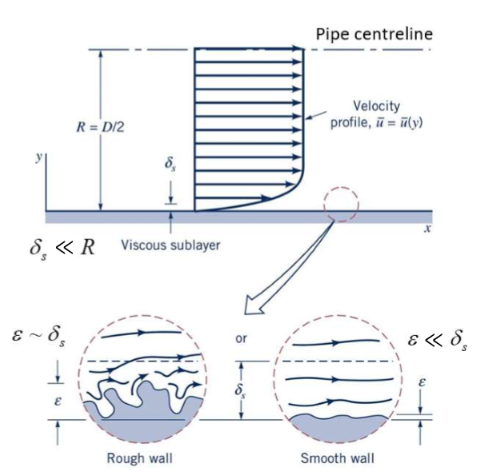
Is laminar flow affected by pipe roughness? What about turbulent flow?
Laminar is not whilst turbulent depends on pipe roughness.
True or false.
Energy losses in pipes are only due to friction at walls.
False.
Give 3 examples of where losses can occur in a pipe system.
Contractions
Expansions
Bends
Tees
Valves
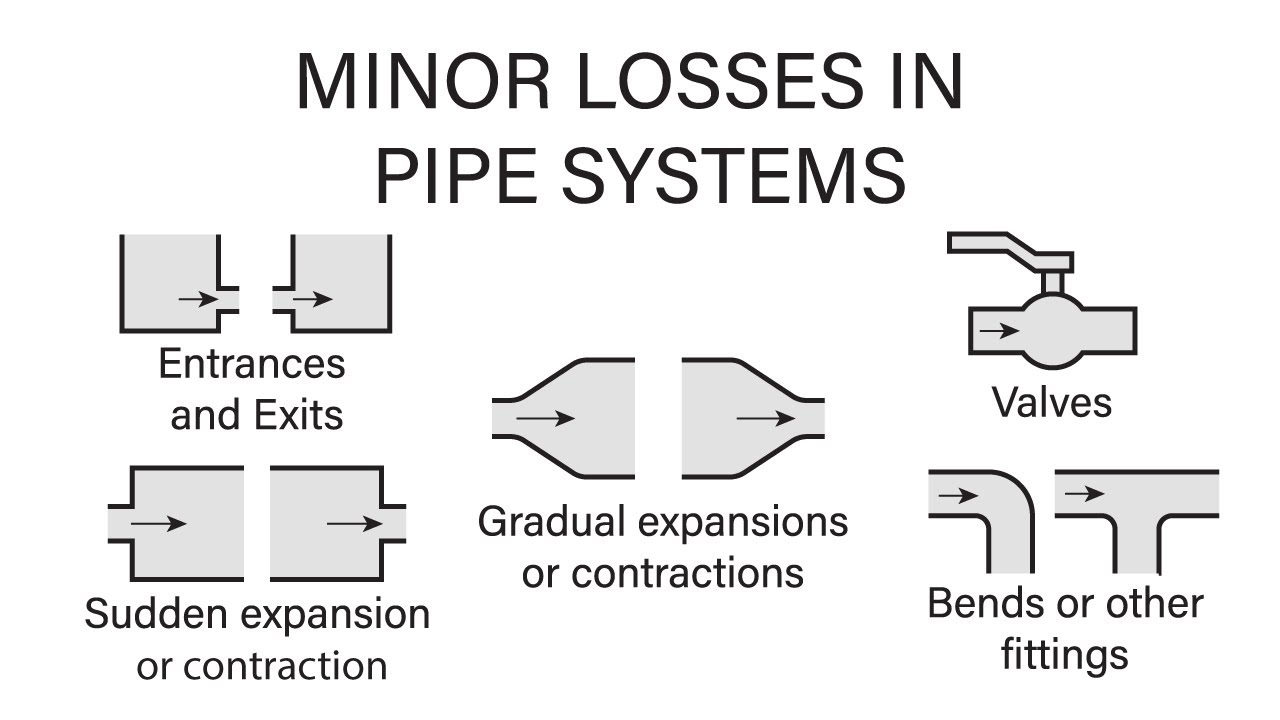
Why do things like contractions and expansions cause losses in a pipe system?
They accelerate and decelerate the flow field.
True or false.
It is easy to accelerate fluid with low energy loss.
True. It IS easy to accelerate flow with low energy loss BUT difficult to decelerate without energy loss.
Why are minor losses called minor? Are they always really minor?
They are often called minor because they are smaller COMPARED to wall friction losses in large (length-wise) pipes. In a smaller pipe system, they can be be far from minor.
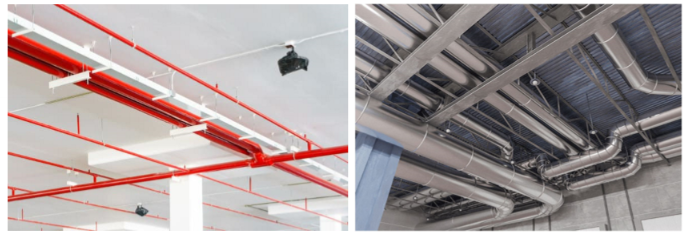
What does the empirical loss coefficient K_L depend on?
Geometry and Re.
What are entrance losses?
Losses experienced at the entrances of pipes connected to reservoirs.
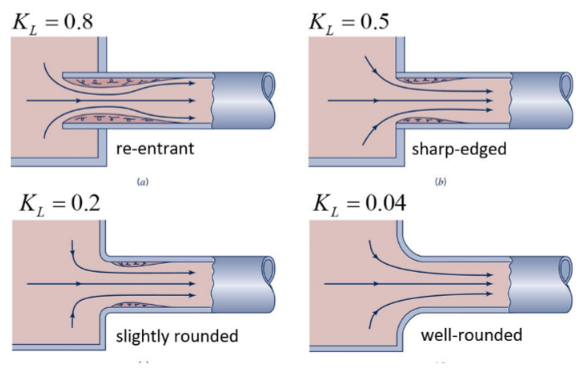
What are entrance losses caused by?
They are due to radial acceleration of fluid to the pipe and the vena contracta inside the pipe.
Depend on geometry of pipe entrance region and pipe velocity head.
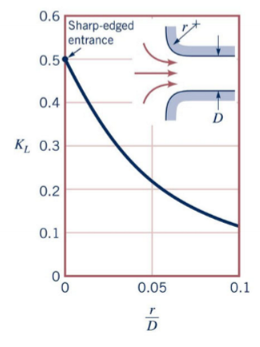
What are exit or discharge losses? Are they dependent on geometry and pipe velocity head?
Losses at pipe exits in reservoirs.
NOT dependent on geometry and equal the entire velocity head of the pipe flow.
What does a sudden contraction graph look like for losses?
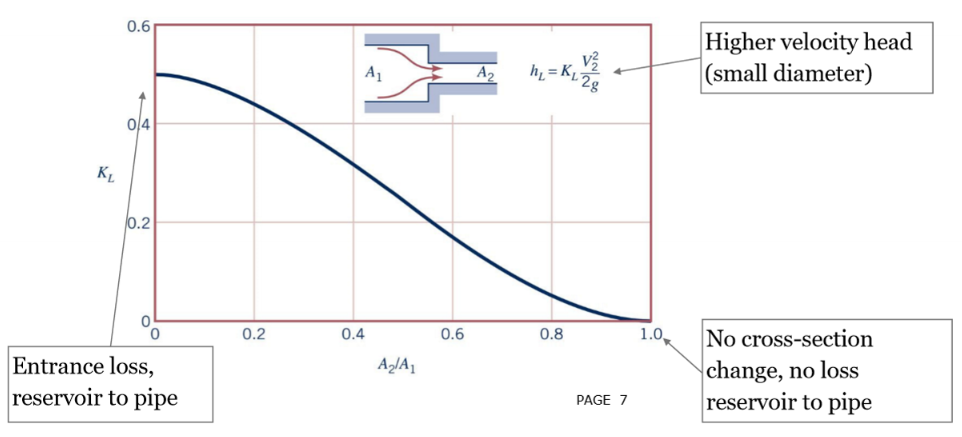
What does a sudden expansion graph look like for losses?
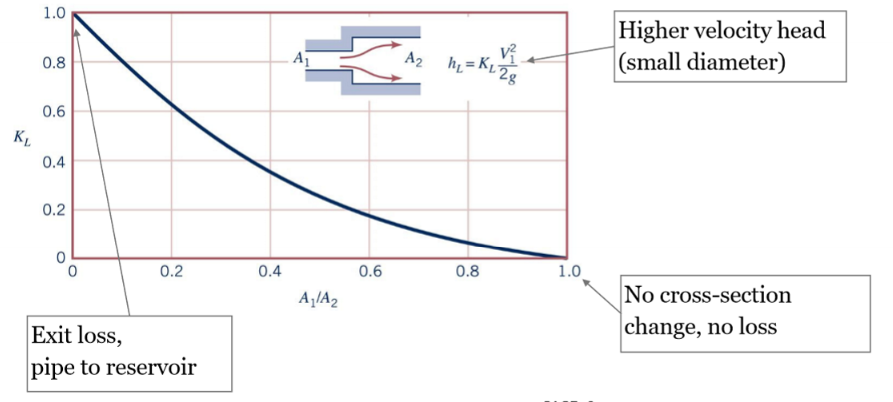
What does the head loss coefficient for gradual contraction and expansion fittings depend on?
Depend on area and the angle of the diameter reduction or increase.
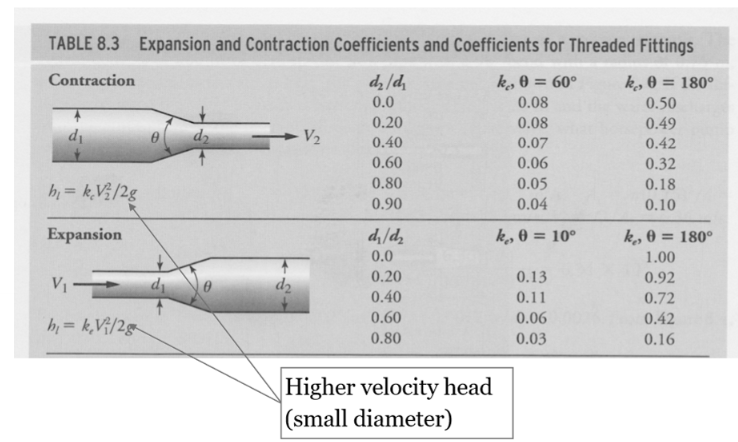
What are bends a function of?
Function of bend radius, bend angle and pipe diameter.
Fill in the blanks.
Pipe flow around a bend experiences an ______ in pressure on the ______ wall and ______ of pressure along the ______ wall.
increase, outside
decrease, inner
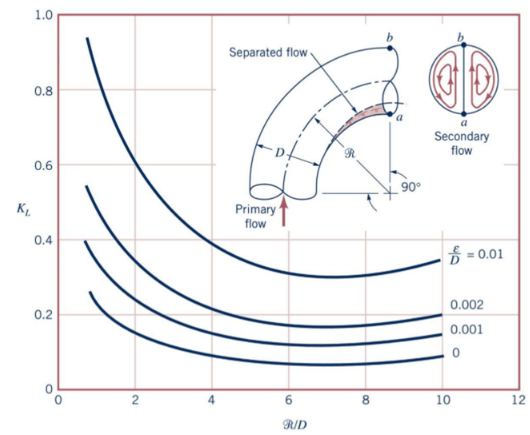
How do valves control flow in pipes?
Valves create high head losses! Head loss coefficients depend on valve type.
When fully open, do valves exhibit head loss? When fully closed, do valves have a head loss coefficient?
Fully open→ do exhibit head loss
Fully closed→ head loss coefficient for value is infinity.
What is an example of major head loss?
Energy loss through friction in the length of pipe.
What is the difference between minor and major head losses?
Major losses occur due to the friction effect between the moving fluid and the walls of the pipe. The minor losses occur due to any disturbance that might occur to the flow, which is mainly caused by the installed fittings on the pipeline.
TLDR; major→ friction. minor→ geometry.
Compare and contrast pumps and turbines.
Pumps convert mechanical energy to hydraulic energy.
Turbines convert hydraulic energy to mechanical energy.
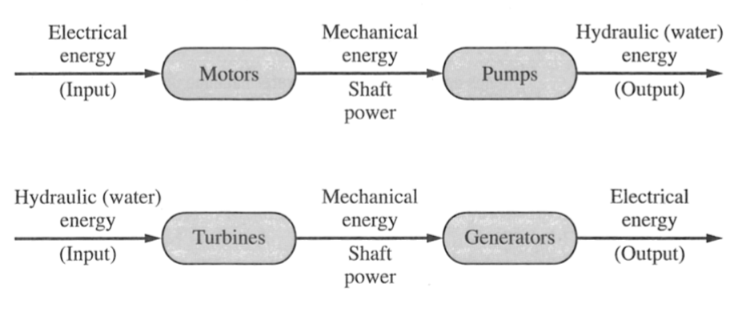
Can we have an efficiency value greater than 1?
No.
Because of friction and other losses in the system.
What is overall energy reliant on?
Depends on the conversion of electrical energy to mechanical energy and mechanical to hydraulic energy.
Pumps can be categorized into two different types. What are they?
Positive-displacement pumps
Dynamic pressure (rotodynamic) pumps
What are positive-displacement pumps?
A positive displacement pump moves a fluid by repeatedly enclosing a fixed volume and moving it mechanically through the system.
There are positive and negative divisions of the pump which push fluids through the pump.
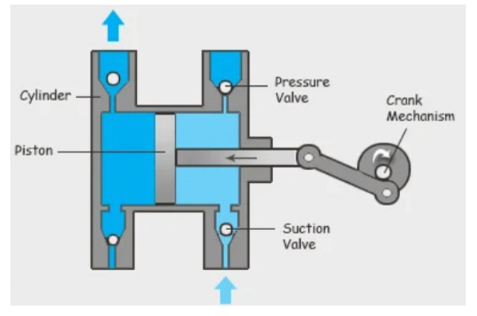
What are dynamic pressure pumps?
A type of pump that increases the fluid's velocity, converting this kinetic energy into pressure energy. Done so using rotating vanes or another moving fluid.
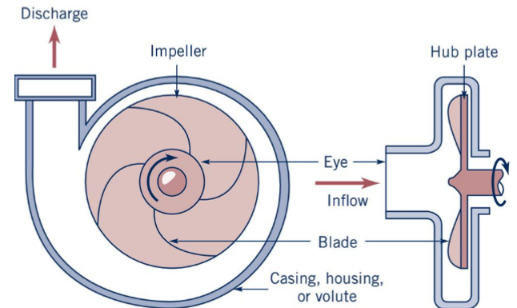
What is the most common form of a dynamic pressure pump?
Centrifugal pump.
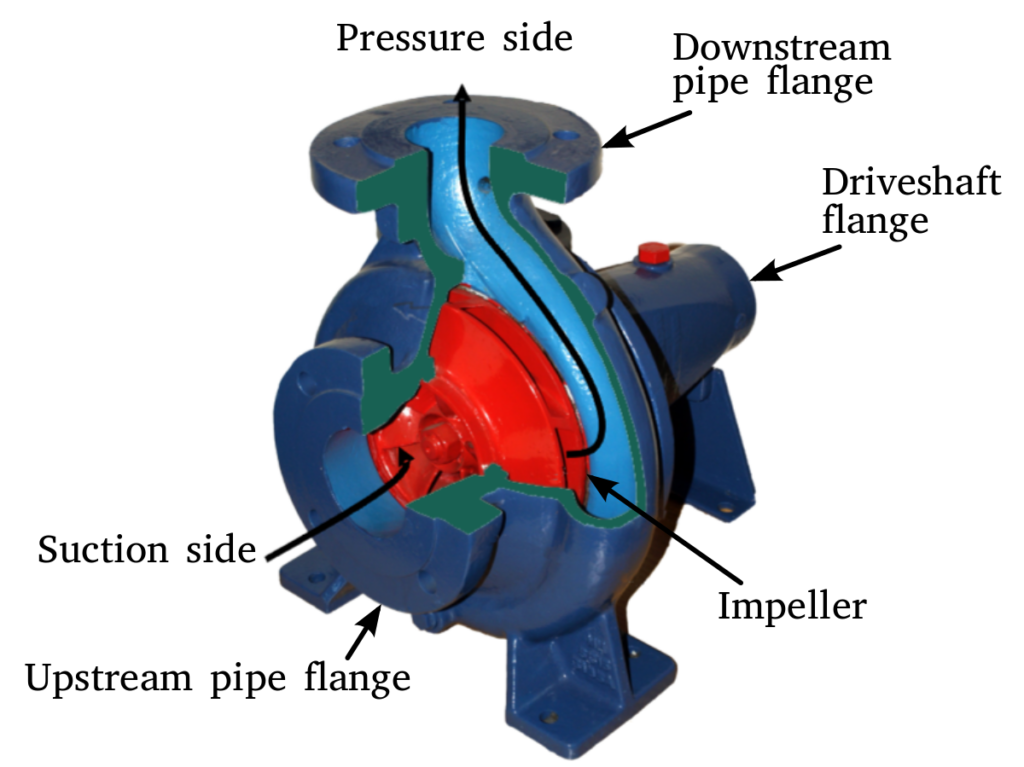
What does a pump characteristic curve look like and what do they represent?
They represent the operational performance of a pump.
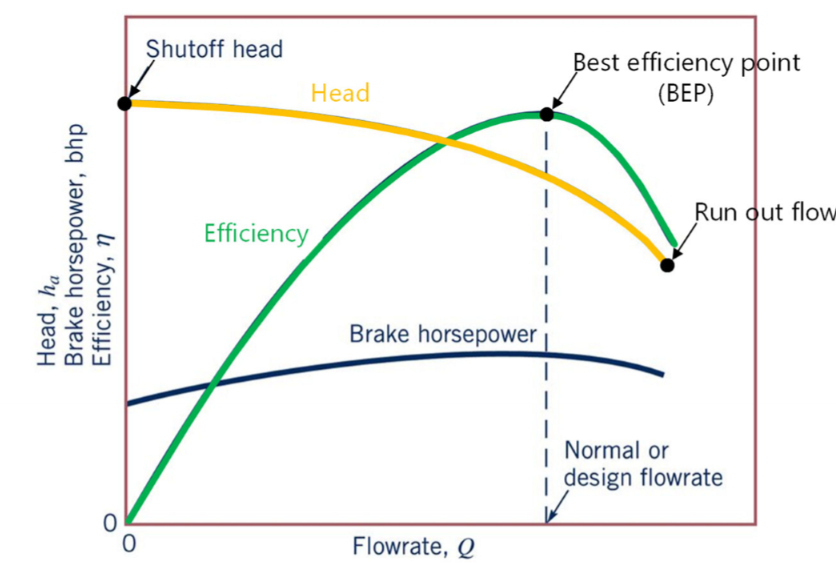
Compare and contrast pumps in parallel and series. (specifically reference H to Q)
Parallel pumps→ larger Q at same H
Series pumps→ larger H at same Q
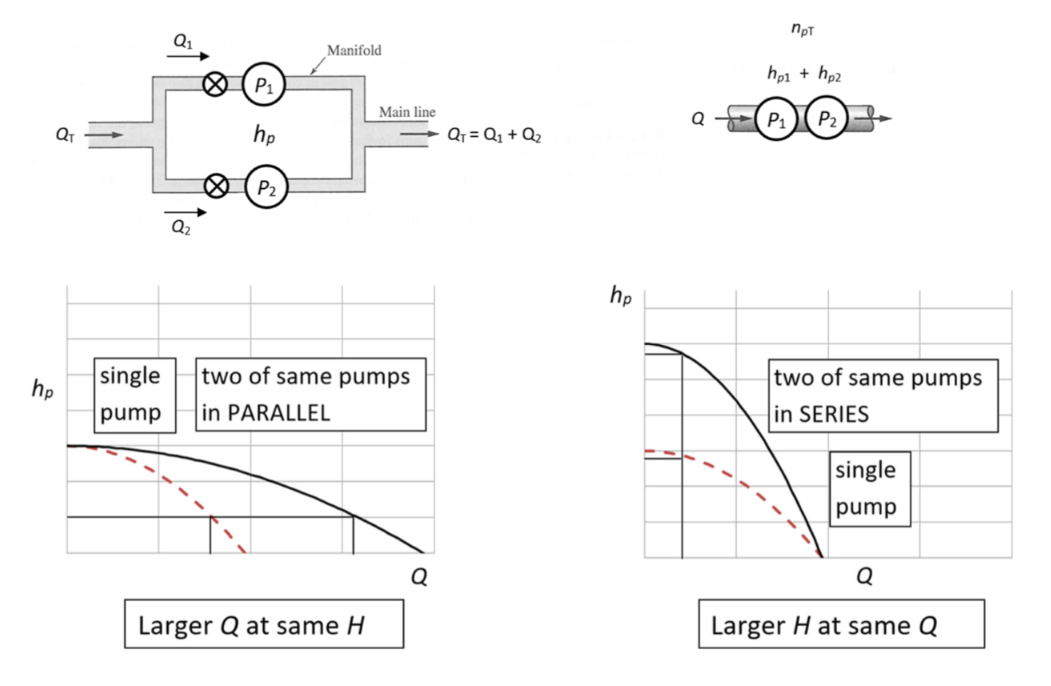
Do we put pumps at the top or bottom? Justify your answer.
Pump is put at the bottom because we need to make sure that the pressure of the pump is higher than that of the vapour pressure. Also prevents cavitation!
What does NPSH stand for and what does it entail?
NPSH stands for net positive suction head. It is defined as the difference between the total head on the suction side (near pump impeller head) and the liquid vapour pressure head.
What are two reasons as to why we should be staying away from cavitation?
Unnecessary head losses and structural damage.
What are two NSPHs of interest? What does each represent?
NSPH required (NSPH_R)→ must be maintained or exceeded so that cavitation does not occur.
NPSH available (NSPH_A)→ represents suction head that actually occurs for the specific flow system.
For a pump operation operation, what must be true for NSPH_R and NSPH_A?
NPSH available MUST be >= NSPH required.
Name four reasons that reduce the pump efficiency
Mechanical efficiency losses
Friction losses between parts
Head losses due to electrical issues
Hydraulic efficiency losses
Friction losses or erosion losses
Acceleration and deceleration losses (bends, elbows, etc)
Volumetric losses
Leakage within pumps or fans
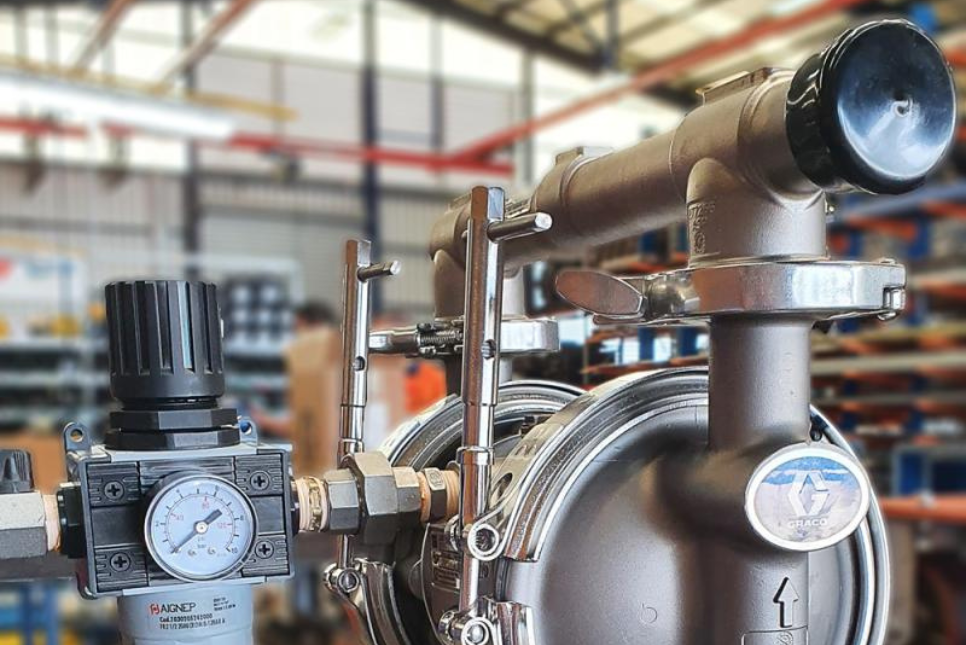
How do you find the operating point of a pump using the pump curve and system curve?
Superimpose them.
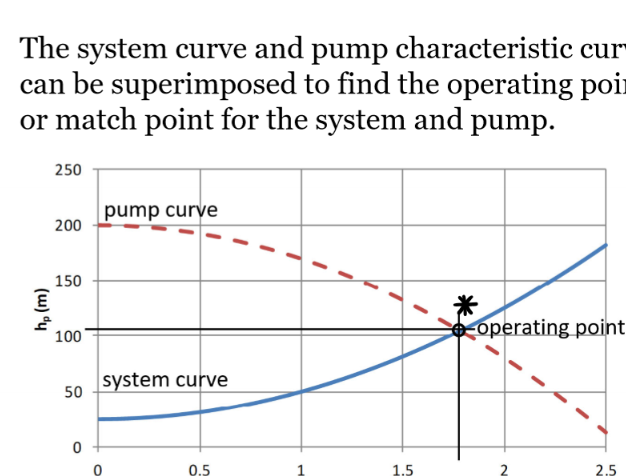
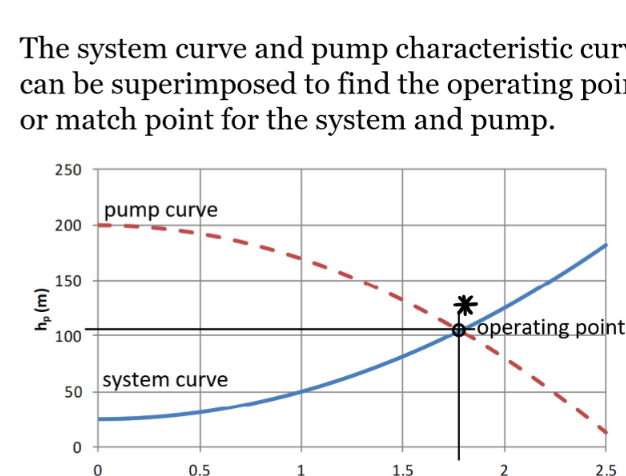
In this diagram, when is the pump running less than its power? What does Q=2 mean?
If Q=1, running pump less than its power.
If Q=2, pump cannot push at that elevation because its higher than its operating point.
Is h_m or h_p an increasing function?
h_m = f(Q) is an increasing function
h_p = f(Q) is a decreasing function
Compare and contrast parallel and series pipes.
Series pipes have the same Q: Q = Q1 = Q2 = Q3 but have a different head loss wherein hL total = hL1 + hL2 + hL3.
Contrarily, parallel pipes have a different Q with Qtotal = Q1 + Q2 + Q3 and exhibit the same head losses such that hL = hL1 = hL2 = hL3.
